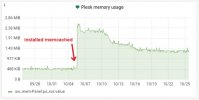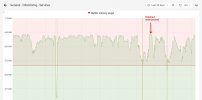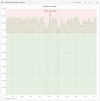Blooblabb21
New Pleskian
Last month my server crashed because I ran out of MySQL memory, I run a video streaming site that usually runs up to 7 SQL queries per watched-video, but in the last few weeks I have optimised my queries and used memcached to cache every video so that now only 2 queries are run per watched-video. However I have still seen no improvement in memory usage. I have verified that memcache is installed and is working, so why does it feel like no pressure has been alleviated?
plesk memory usage after installing memcached:

plesk mysql usage after memcached:

plesk memory usage after installing memcached:

plesk mysql usage after memcached:



